Cards In This Set
| Front | Back |
|
As a self assembling aggregate, What do Fatty acids form?
|
 Micelles: due to its indiv. wedge shaped structure |
|
What is a liposome?
|
 A circular bilayer of phospholipids-used for drug delivery |
|
For the phospholipid bilayer, how are the leaflets held together?
|
Van der waals interactions (weak bonds btw hydrophobic tails)
|
|
In Transmission Electron
Microscopy (TEM), how do the membranes appear?
|
 Trilaminar. Look trilaminar b/c outer dark + inner dark + middle clearPolar head groups attract osmium tetroxide; become dark; center lipid section remains clear |
|
What is a benefit for liposome drug delivery?
|
 •Reduces systemic drug toxicity •Surface bound PEG (polyethylene glycan) protects from detection by mononuclear phagocyte system & increases the blood circulation time |
|
What are 4 key points of the fluid mosaic model?
|
1.) Inner & outer
leaflets = asymmetric
•different phospholipids – do not interdigitate
2.) Lipid & Protein
diffusion in plane of membrane leaflet
•Lateral diffusion, not flip-flop
3.) Membrane proteins =
Integral & Peripheral (and lipid-anchored)
4.) Glycoproteins & glycolipids are on outer leaflet
|
|
What are the 2 main factors involved with Tm of the cell membrane?
|
•Tm: depends on the ratio of unsaturated:saturated
fatty acids
&
cholesterol
|
|
What are 4 things that will increase a membranes fluidity?
|
 •↑ fluidity 1.)Unsaturated fatty acids tail (↑ cis-double bond kinks) 2.)Short chain 3.)↑ temperature 4.)↓Cholesterol |
|
What are 2 things that cholesterol does for the cell membrane?
|
Cholesterol decreases
fluidity…
but it also stops the membrane from becoming solid |
|
How is cholesterol involved with the cell membrane of erythrocytes?
|
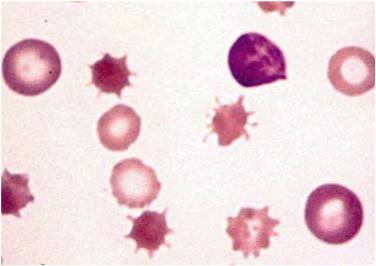 Normally:•Erythrocytes: optimal shape = spherical with dimple to maximise surface area to volume, so it enhances O2 transferNow, when there is an ↑ cholesterol:phospholipid ratio → distorted cell shape; acanthocytes Acanthocyte (Greek "acantha" = thorn): |
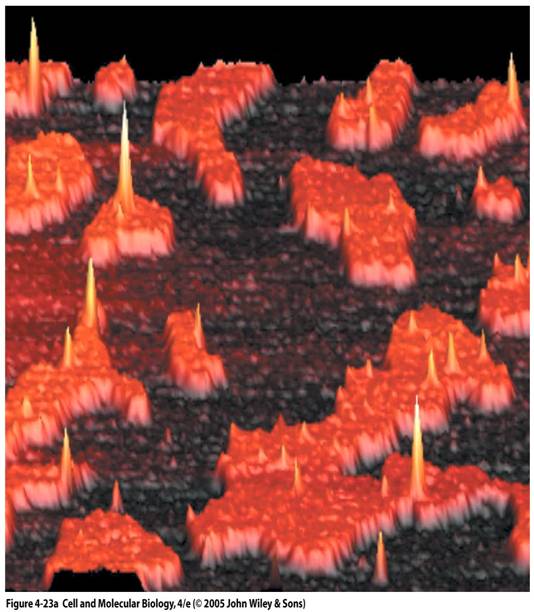 What are Lipid Rafts?-what is it rich in?-how are the membrane proteins organized?-What is its anchor? |
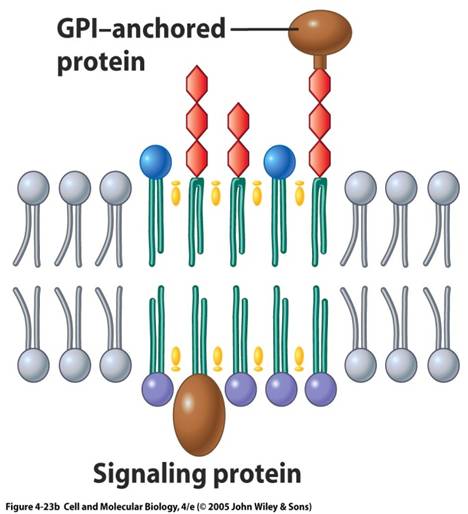 "Butter Islands in Oil"•Rich in cholesterol & glycosphingolipids (long saturated tails)*-which is why it is more solid → less fluid, thicker •Stick out of membrane: Longer & straighter lipid tails •Contain integral & peripheral membrane proteins : Clustering enables proteins to function together / for transport into endocytic vesicles •GPI: glycosylphosphatidylinositol anchor = glycolipid that attaches proteins to PM |
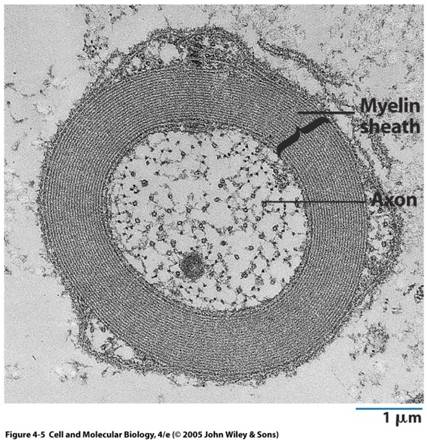 Membrane lipid composition is important as it reflects function. Name two examples in the human body that are in higher amounts and its function. |
 •Cardiolipin: ↑ in heart… important for electron transport chain •Glycolipids: ↑ in brain, particularly myelin (neuroglia): neutral phospholipid, long FA chain, packs more tightly |
 How is membrane asymmetry maintained? What are the functional importances? |
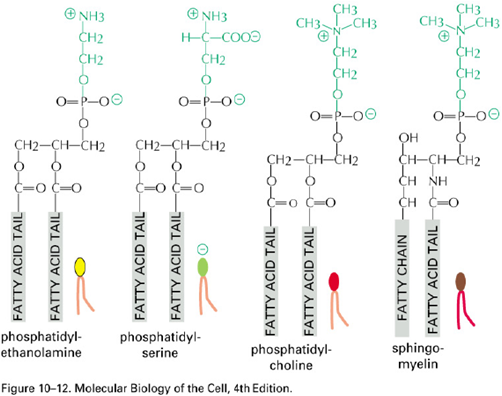 •Extracellular (outer) leaflet: •Glycolipids (blue) •Cytosplasmic (inner) leaflet: •Phosphatidyl serine (green, -ve) •Asymmetry: maintained by flippases •enzymes selectively “flip” particular phospholipid across membrane •Functional importance •Many proteins bind to specific lipid head groups in inner/outer leaflet •Phosphatidyl serine flipped to outer leaflet signals apoptosis |
|
In regards to lipid movements within the lipid bilayer, What is required for flip- flopping?
|
 •flippases •phospholipid specific •move PLs (phospholipids) to outer leaflets •scrambalases •non-specific scrambling •in ER membrane: mix up newly synthesised PLs |
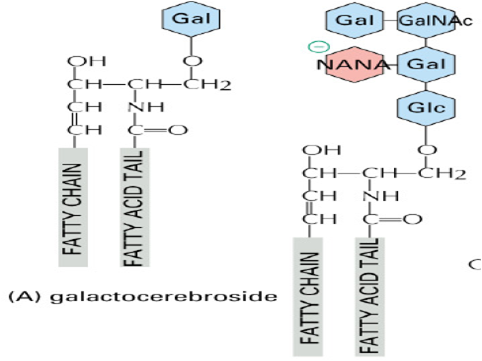 |
 •Surface of all PMs •Only on outer leaflet, preferentially in lipid rafts. •Cell-cell recognition •Protection (only on exposed apical surface of epithelial cells) •Nerve conduction |



